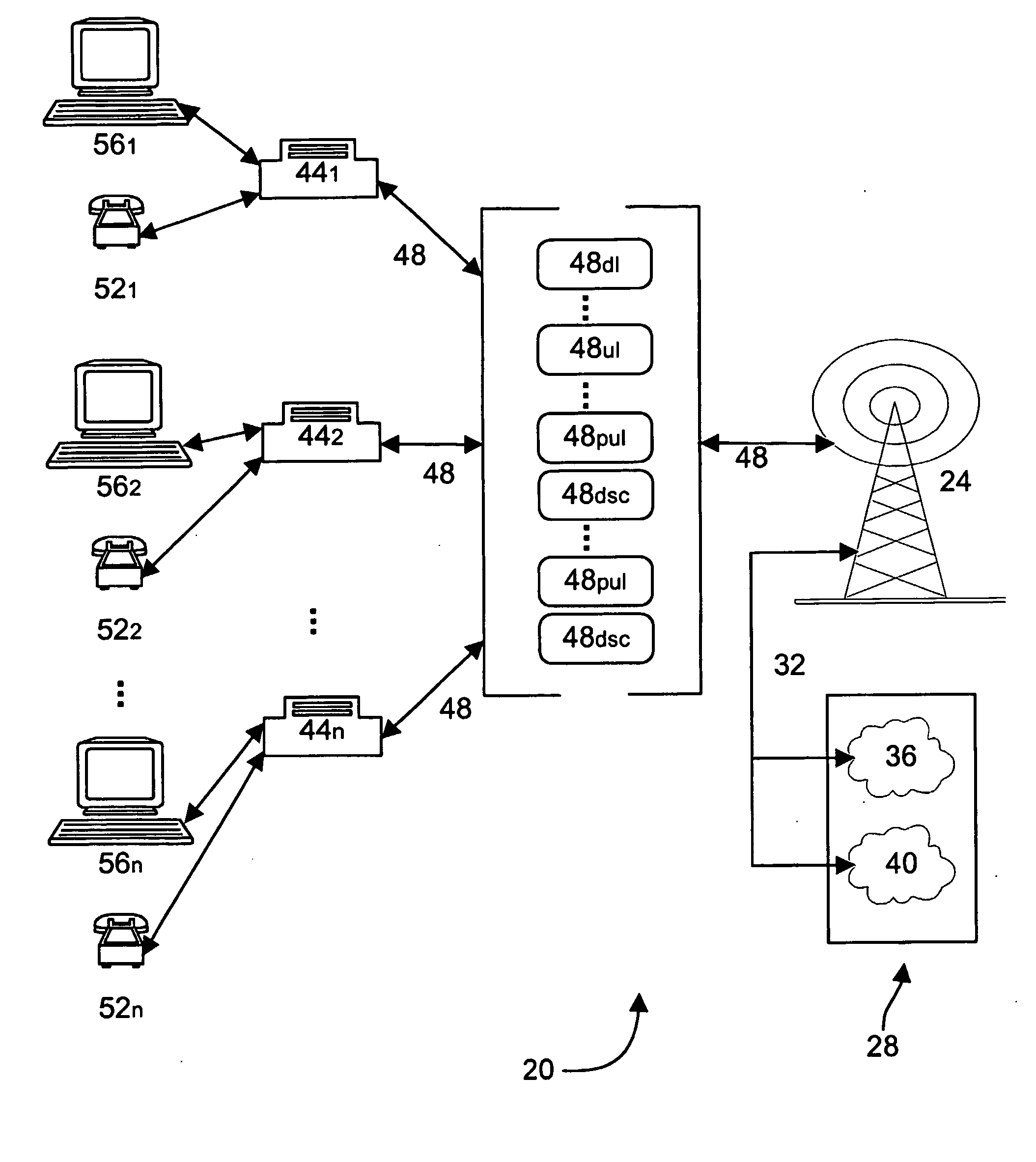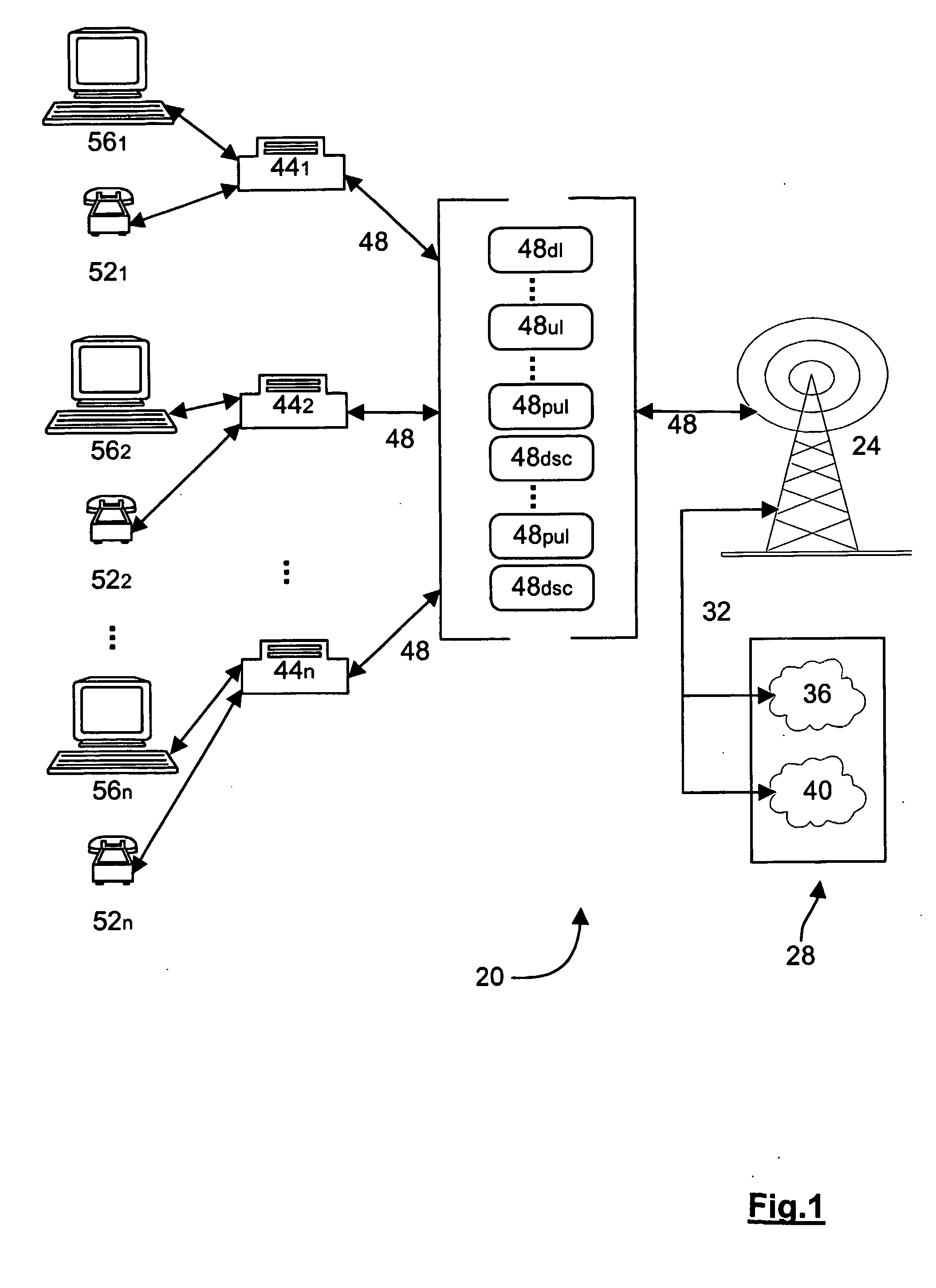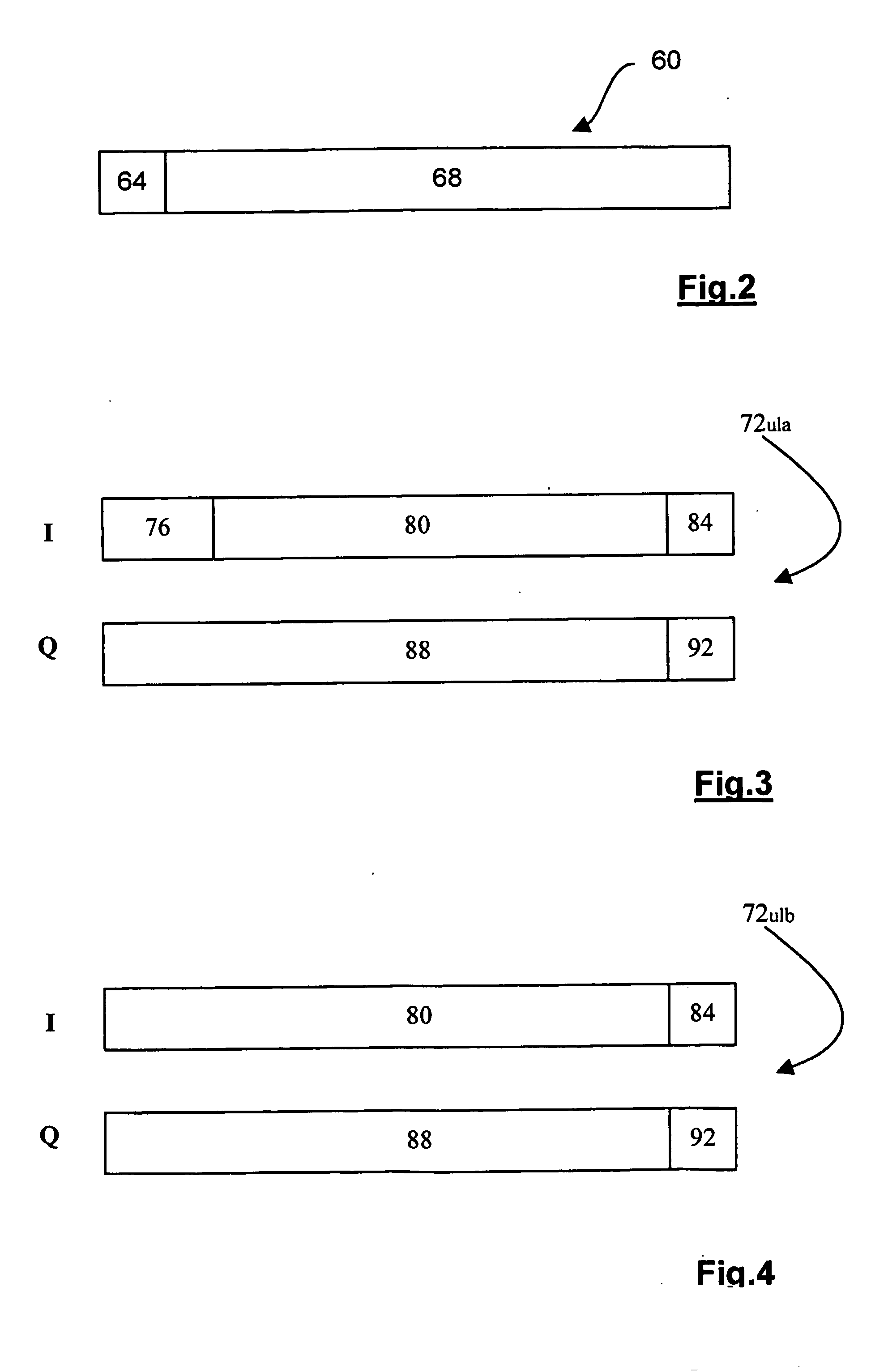Communication channel structure and method
a communication channel and channel structure technology, applied in the field of telecommunication systems, can solve the problems of unacceptably slow services, poor voice service delivery medium, low error rate, etc., and achieve the effects of improving the utilization balance of at least two uplink channels, reducing the number of downlink channels, and monitoring the utilization level
- Summary
- Abstract
- Description
- Claims
- Application Information
AI Technical Summary
Benefits of technology
Problems solved by technology
Method used
Image
Examples
Embodiment Construction
[0049] Referring now to FIG. 1, a wireless local loop system is indicated generally at 20. System 20 includes a wireless base station 24 that connects, through appropriate gateways, to a communication network 28 via a backhaul 32. Network 28 can be operable to carry different types of communication services, which in the present embodiment includes both data to and from public switched telephone network (PSTN) 36 and data to and from a packet switched data network 40, such as the Internet, although network 28 can also be a converged network, etc. as will be apparent to those of skill in the art. Backhaul 32 can be any known type of suitable backhaul link between wireless base station 24 and network 28, such as a T1, T3, OC1 or a wireless microwave link, etc.
[0050] Base station 24 has a transceiver that is used for communicating with a plurality of subscriber stations 441 through 44n via a wireless link 48. In a present embodiment, wireless link 48 employs CDMA as a multiple access ...
PUM
 Login to View More
Login to View More Abstract
Description
Claims
Application Information
 Login to View More
Login to View More - R&D
- Intellectual Property
- Life Sciences
- Materials
- Tech Scout
- Unparalleled Data Quality
- Higher Quality Content
- 60% Fewer Hallucinations
Browse by: Latest US Patents, China's latest patents, Technical Efficacy Thesaurus, Application Domain, Technology Topic, Popular Technical Reports.
© 2025 PatSnap. All rights reserved.Legal|Privacy policy|Modern Slavery Act Transparency Statement|Sitemap|About US| Contact US: help@patsnap.com



